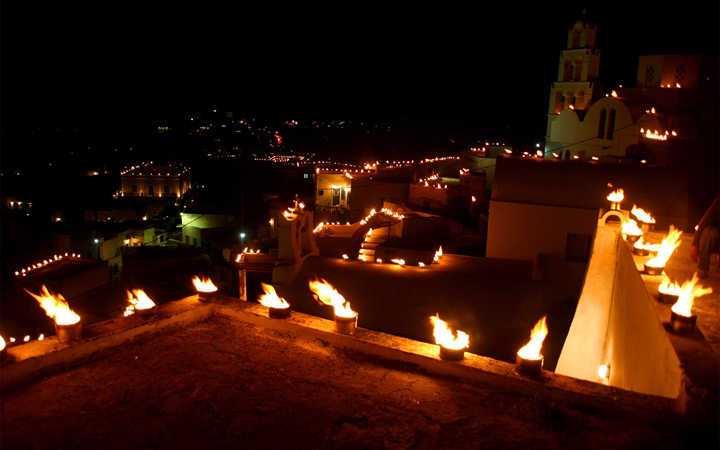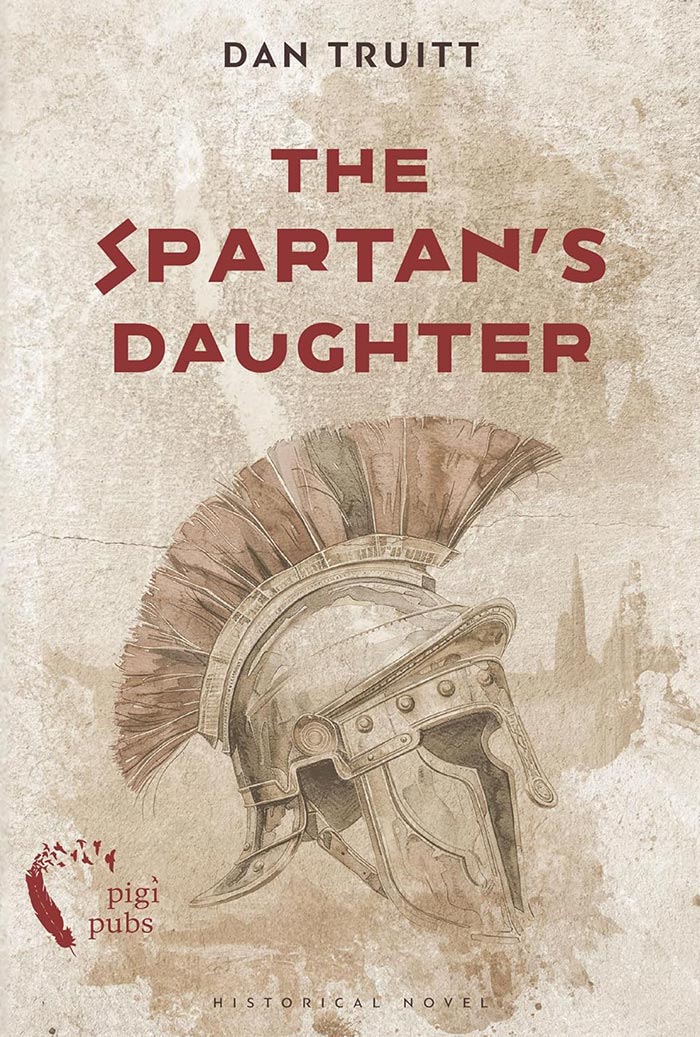While most of the world celebrates Christmas as Christianity’s biggest holiday, the central event of the Christian faith is not the birth of Jesus. It is the Resurrection. Without the Resurrection, Christians are without hope and without God in the world.
The Resurrection affixes the seal of authenticity onto the ministry of Jesus, and, for those who do not accept his claims, it is the most difficult obstacle to overcome. Once you’re dead, you’re dead, people reason, and there’s no coming back. Be that as it may, Christians believe that Jesus indeed rose from the dead, and to them, that makes all the difference in the authenticity of the message of Christ.
The Eastern Orthodox Church is the one Christian body that sort of gets this right, meaning, Easter is the biggest holiday on its religious calendar, not Christmas.
Easter, or Pascha, is the most widely celebrated and most interesting of all the holidays on the Greek calendar. It’s interesting because of the many ways it differs it its celebrations from its Western cousins, whether Catholic or Protestant.
We’ll be using the Greek term for Easter in this post, Pascha, which is a Hellenized form of the Hebrew word which we translate as “Passover.” The New Testament likens the Old Testament event of Passover, during which the Hebrew slaves in Egypt were delivered into freedom by passing through the Red Sea, as a foreshadowing of the death and Resurrection of Jesus, and as an image of deliverance from the bondage of sin and death for Christians. Passover is mentioned 28 times in the New Testament.
The natural backdrop of Pascha in Greece is glorious. If you have not been to Greece in the spring, you have not experienced the country to its fullest. If you travel through the Peloponnese during the months of April and May, you feel compelled to roll down your windows in order to apprehend it with all of your senses. The warm breezes blow, sun shines bright and warm on the incandescently green vegetation which covers the valleys and mountains, the fields are punctuated by bright red poppies, and the china-blue sky is populated by fluffy fair weather clouds. Most striking of all, it is the sweet aroma of blossoming lemon and orange orchards which make such a journey a sensory feast. The people who make air fresheners have been trying forever to duplicate this scent. They can’t even come close.
The world is bursting with glorious life after a miserable winter of cold, rain, and, occasionally, snow. Its re-awakening is a wonderful illustration from nature of the idea of rebirth, and of the resurrection from death to life that is the lynchpin of the Christian faith. Once upon a time the story of Demeter and Persephone was used to illustrate the rebirth of nature in Greece. Now it’s the Resurrection of Christ.
Moving from the natural world to the human, there are all kinds of interesting customs- many of them common to all Greeks, but many also specific to various locales- that make Greece a fascinating place to be during the Paschal season.
Nation-wide Customs
Most of these customs are common to the entire country. These are a combination of liturgical customs, and cultural customs.
Liturgical Customs are those having directly to do with the functions of the Eastern Orthodox Church. It all begins 40 days before Pascha, with Clean Monday, the start of the Lenten season. During this time, traditionally, animal products are not consumed. While this is an undoubted boon to one’s health, it is rare today to see this fast observed strictly. Those that do observe it usually compromise with the consumption of fish, eggs, and dairy products, foregoing beef, pork and chicken. Many try to fast, in some form at least, during Holy Week, the tail end of Lent.
As in the Western Church, Holy Week kicks off with Palm Sunday, with church services often held under palm branches to commemorate the entrance of Jesus into Jerusalem as the Jewish Messiah. For the individual days of Holy Week, Greeks use the word “Great (“Megali”) instead of “Holy.” Each of the following days are different in their emphasis and significance in the church’s liturgy:
Great Monday- Jesus’ instructions to his disciples.
Great Tuesday- reflection on Christ’s teaching leading to His crucifixion.
Great Wednesday- Jesus is anointed with oil by Mary Magdeline and betrayed by Judas.
Great Thursday (Maundy Thursday)- The Last Supper and the reading of 12 Gospel excerpts detailing Christ’s final instructions.
Great Friday (Good Friday)
So much happens on this day that it deserves its own subheading. It’s a day of great mourning in remembrance of the Crucifixion. This day’s activities mark a significant divergence between the Eastern and Western Churches.
All during the day one is reminded what day it is by the constant, intermittent single stroke of the churches’ bell about once every minute or less: “dong……dong…….ding……..dong” and so on. People visit cemeteries to clean the tombs of loved ones, light candles, and leave fresh flowers. In many households, lentil soup is served as a symbol of Mary’s tears. The soup is served without oil, and seasoned with vinegar, in remembrance of the vinegar-soaked sponge offered to the dying Jesus by a Roman soldier.
The Epitaphios is a word literally meaning “upon the grave,” and it’s the highlight of the Great Friday observance. Originally, Epitaphios was the title of a famous speech by Pericles in the Ancient Athens cemetery delivered in 430 BC memorializing the dead in the Peloponnesian War. (We refer to it as Pericles’ Funeral Oration.) We get the word “epitaph” from epitaphios.
The Epitaphios is the name of an icon of Christ depicting His burial. The Epitaphios includes the icon, wrapped in cloth as a burialshroud, the flower-covered bier upon which it rests, its canopy, and the procession which follow the bier as it leaves the church and makes its way through the streets.
The procession, made up of parishioners holding lit candles, starts after sunset, after the church service, with the icon and bier carried on the shoulders of the faithful, and led by altar boys and priests dressed in their colorful robes while the bells of the church continue their mournful “dong…dong…..ding….dong.” At some point the procession stops, and the members of the procession sing or chant a traditional hymn memorializing the removal of Jesus from the cross, his anointing, and his burial, all of which take place in that sweetest of seasons, spring. In larger cities, two churches may meet at a common point and worship together. The Epitaphios is unique to Eastern Orthodoxy, and is one of its most colorful and impressive ceremonies.
Great Saturday and Pascha Sunday
Easter (Great) Saturday brings a change in focus from one of mourning to one of preparation and anticipation. Celebrations center on the light which “shineth in the darkness, and the darkness comprehended it not (John 1:5).” At the Church of the Holy Sepulcher in Jerusalem, traditional burial site of Jesus, the Agio Phos, or “Holy Fire,” is kindled, placed in lanterns and sent around the globe to Orthodox churches everywhere. The highlight of the day comes at the very end, during the Midnight Mass, where Christians arrive at 10PM, holding candles known as “lambadas.”
As midnight approaches, the lights in the church are completely extinguished. As parishioners wait in hushed, expectant darkness, at the stroke of midnight, the traditional hour of the Resurrection of Christ, the priest lights his candle from the Holy Fire, raises it, and cries out “Come and get the light!”
The light is then passed, igniting parishioners’ candles one after another, as the light sweeps back from the front of the church to the back, as people greet one another with “Christos Anesti!” (Christ is Risen!) answered by “Alithos Anesti!” (Indeed He is Risen!” This is a common greeting for days after the Pascha celebration.
Bells toll, fireworks are set off, and the entire church spills out into the streets, candles burning. Many of the faithful carry their lit lambadas to their houses, and, using the smoke from the candle, paint a cross on the lintel of their doors, just as the Hebrews painted their lintels and doorways with the blood of the sacrificial lamb during the first Passover in Egypt.
At home, a midnight meal is served, breaking the 40-day Lenten fast, with magiritsa, a soup made of diced entrails of lamb. Afterwards, hardboiled eggs dyed red are cracked together in friendly competition to see who has the toughest egg, with the winner promised good luck for the following year.
Pascha- Easter Sunday
This is the day for preparing an entire lamb or kid to be roasted over hot coals in an open pit, or, in cities where open land is not available, the lamb or goat is roasted in an oven with potatoes, along with kokoretsi, spiced goat intestines wrapped in offal (organ meat). The Pascha feast is pretty impressive, with salads, roasted lamb or goat, sauces, appetizers, wine, and more red eggs. Traditional dances are often performed in celebration of the Resurrection and the promise of life everlasting for all believers. It is a day of joy, of fellowship, and of pure enjoyment of the bounty of Greece and its beautiful springtime weather.
Local Customs
In some islands, the bearers of the Epitaphios wade right into the sea, blessing the sailors of Greece with safety on their voyages. On the island of Chios the “Rouketopolemos,” or rocket war is performed at midnight on Pascha, when two “warring” churches fire homemade rockets at each other’s church, aiming for the bell tower. It’s their version of the fireworks displays seen elsewhere in Greece. Tourists love this tradition, but it makes many locals nervous, forcing them to board up their homes as a protective measure.
The ”Flames of Pyrgos” is a phenomenon seen in Pyrgos on the island of Santorini, where thousands of tin lanterns are arranged on walls, stoops and terraces in the villages, lit by children running ahead of the Epitaphios on Good Friday. In Leonido, the Peloponnese, at the announcement of “Christ is Risen,” Paschal lanterns are set aloft, powered by petroleum-soaked rags placed on their bases. They stay airborne for a half hour or more, when they are finally extinguished, or consumed.
In Crete, on Good Friday, locals begin preparations to “dine” with their departed loved ones at local cemeteries on the day after Pascha, Easter Monday. There is also the widespread custom of Greeks carrying food to the sites of the recently cleaned and decorated tombs of loved ones, where relatives and friends dine, remember the departed, and look forward to the Resurrection from the dead of all believers.
On the island of Corfu, there is the tradition on Pascha of the shattering of “botides,” specially designed clay pots, while the church bells of the islands congregations toll out the good news of the Resurrection. Rooted in pagan tradition, this noisome ceremony is supposed to chase evil from the area.
On the islands of Symi and Astypalaia, Judas gets his due as locals burn his effigy on Pascha. The straw-stuffed effigy is paraded around town before being set alight. This tradition is carried on as well, with different variations, in Thrace and some other locales.
Although most tourists book their vacations to Greece during the summer, it is worth it to come to Greece at least once during the Paschal season. The beautiful weather, and the fascinating observances, make such a trip well worthwhile.














